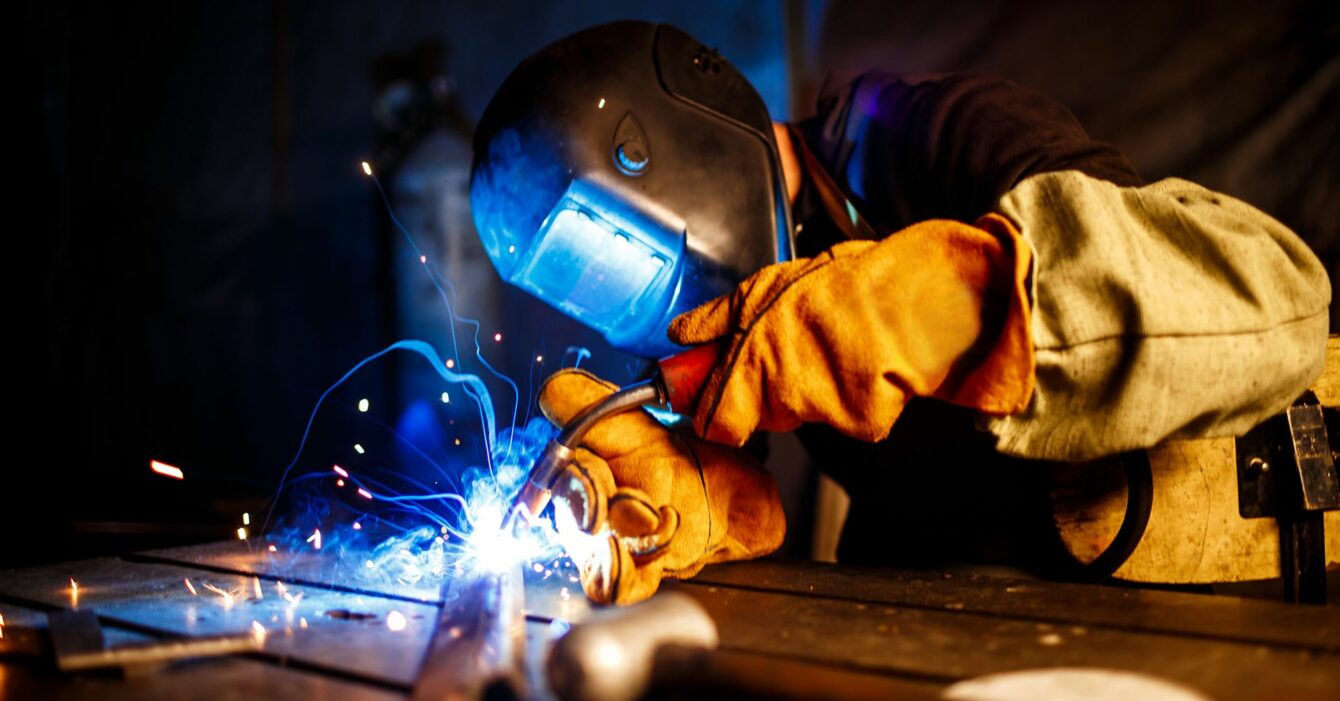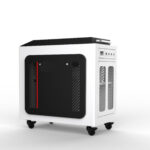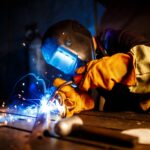History of laser welding
The first laser welding experiments were conducted in the 1960s. Initially, they were used mainly for scientific research, but soon found application in industry as well. Today, laser welding is one of the most popular methods of joining materials. The first laser welding devices were conventional electric welding machines that used laser beams instead of electrodes. However, these devices were not very precise and expensive to maintain. In the 1970s and 1980s, the first commercially available laser welding devices appeared, which were more efficient and precise.
What is a laser?
In the simplest terms, a laser is the amplification of light by means of forced emission of
radiation.
What is laser welding?
Laser welding is the process of joining two parts together using a laser beam. The energy of the laser light pulse is focused by means of an optical system at a small focal point. The resulting high-density energy melts the workpieces and welds aluminum, stainless steel and black steel parts together.
This technology is increasingly used in industry in particular when welding aluminum or stainless steel, due to its many advantages. It is a fast, precise and safe method that can be used to join different materials in many industries. No machining is required after welding.
How does laser welding work?
The laser welding process involves heating materials to melting point
by a laser beam. This is followed by the actual melting of the materials and their joining.
Description of the main parameters of laser welding:
- The power of the continuous laser beam [kW] – the higher the beam power, the greater the depth of fusion of the joint. Laser welding with the wrong power relative to the workpiece to be welded will result in a poor joint structure,
- welding speed [m/min] – the higher the welding speed, while keeping the power constant, makes the depth of fusion decrease. Too high a speed causes the metal to solidify and melt too quickly
Other characteristic parameters of laser welding:
- Laser pulse energy in [kJ],
- laser pulse duration in [ms],
- repetition rate for pulsed welding in [Hz],
- focal length of the laser beam in [mm],
- location of the laser beam focus with respect to the joint in [mm],
- protective gas flow rate and type [l/min],
- selected focal length of the laser beam [mm].
Hand-held laser welders are not suitable for welding plastics. In contrast, some models of our machines have laser cutting capabilities. For laser cutting of metals, it is necessary to set the appropriate parameters on the control panel and change the copper tip in the gun to get the right laser beam for this type of operation.
Manual laser welding requires appropriate safety precautions. In particular, eye protection. This protection can be provided by using appropriate certified welding visors with an additional filter that does not let the laser beam through. In specific conditions, dedicated category 4 laser goggles can also be used.
The main advantages of laser welding.
Laser welding offers the possibility of welding hard-to-weld materials. Welds made with a laser can be made using a filler metal as well as by the laser itself. The laser used in welding machines makes it possible to achieve high efficiency welding of aluminum and alloys of various metals obtaining high strength welds. Laser welding is beginning to be widely used in various industries. The materials to be joined have welds without overheating and surface deformation. The joint surface must be prepared as in traditional welding.
Laser welding is a method with low linear energy and narrow full penetration of the weld, which provides an aesthetic end result. If large and thin sheets are being joined, laser welding is often the only welding method to ensure that the weld does not have thermal distortion in the final product. Laser welding is the best welding method to minimize the loss of base material properties such as hardness and strength.
The laser beam can be used in pulse welding of high-volume production.
Spot welding in laser welding can be a very useful option where the joint remelting depth is to be as small as possible.
Laser welding process – definition
Laser welding is the process of joining two parts together using a laser beam. This technology is increasingly used in industry because of its many advantages. It is a fast, precise and safe method that can be used to join various materials. We can distinguish three stages in the laser welding process: heating, melting and cooling. During heating, materials are heated to the melting point by the laser beam. This is followed by the actual melting of the materials and their joining. Finally, the materials are cooled until they reach a solid state. Laser welding is one of the most precise methods of joining materials. Compared to other techniques, such as electric or mechanical welding, laser welding offers the possibility of joining parts with very thin walls and precise shapes. In addition, it is a fast and safe method, as it does not require high forces or high temperatures. The welding process itself and the ease of automation allow this type of modern technology to be widely used in many industries, where the weld must have the least possible impact on metal deformation.






